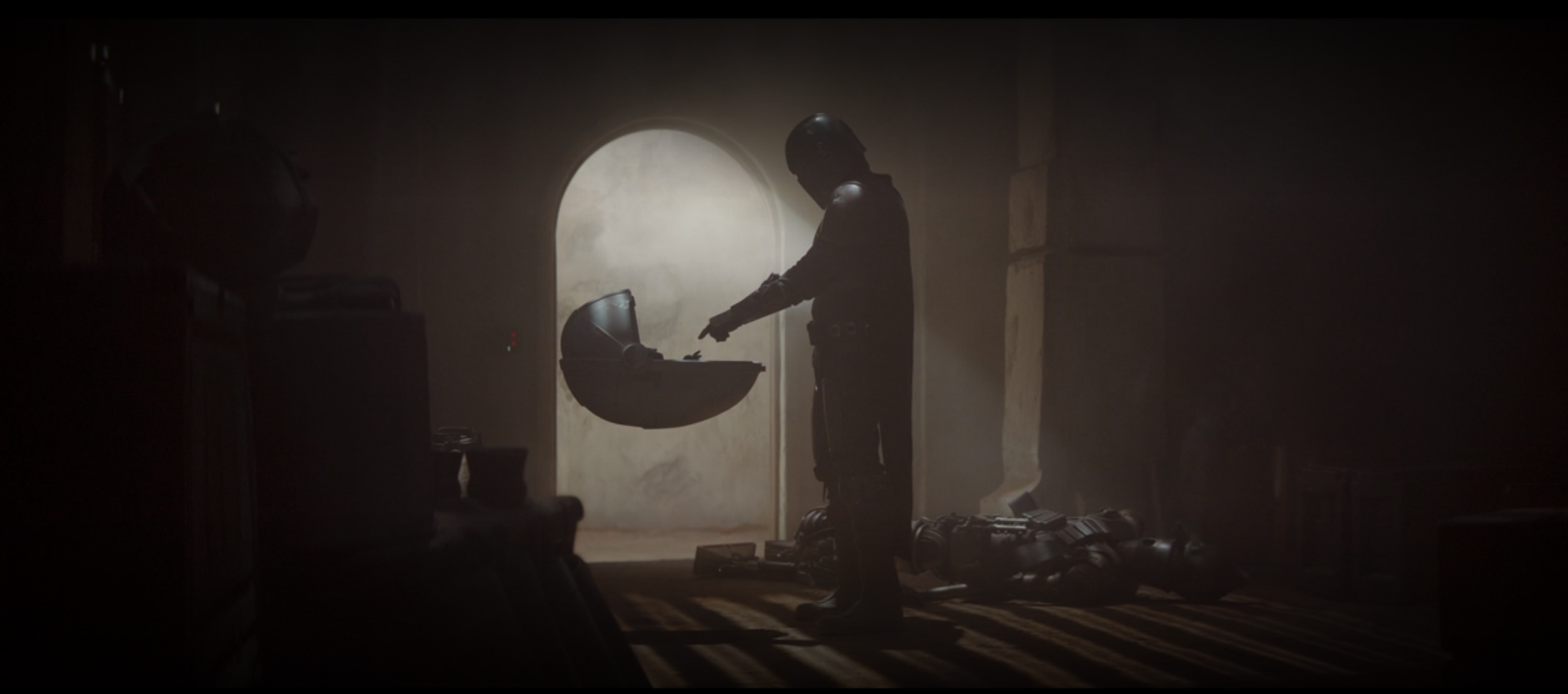The Mandalorian - Chapter 1 // Review
Devoid of the iconic opening crawl which brought the cinematic series to life with trumpeting fanfare, new Star Wars series, The Mandalorian, has no need to declare that it takes place “A long time ago in a galaxy far far away…” Much like its protagonist, The Mandalorian makes its presence known without bombast; communicating through action, not exposition.
The premise is simple enough. Following the collapse of the Empire in Return of the Jedi, a gun-slinging Mandalorian bounty hunter seeks work amid the chaos of regime change. It is through style, cinematography, and world-building that this simplistic plot is elevated into a masterful work.
Borne out of Spaghetti Westerns and Kurosawa Samurai, the most comparable Star Wars property to The Mandalorian is Genndy Tartakovsky’s Clone Wars collection of animated shorts. Though stronger comparison can be drawn between The Mandalorian and Tartakovsky’s most famed property, Samurai Jack, with both series showcasing Ronin-like warriors stylistically traversing a strange, dangerous realm while fighting aliens and androids alike.
Presented as a cross between Clint Eastwood’s Man With No Name, and Halo’s Master Chief, the titular protagonist remains relatively nameless and faceless throughout Chapter One, though a shot of him as a child is revealed in flashback, and it’s heavily implied that his name, or signet, will be earned and revealed in due time. Despite presenting as the lone warrior archetype, the protagonist’s ties to his Tribe, The Mandalorians, is heavily emphasized. Also prevalent is the tribe’s almost spiritual connection to the rare resource, Beskar Steel, which is set up as a potential overarching MacGuffin for the series, and a way for the protagonist to upgrade his armor and weapons piecemeal, à la Destiny.
The protagonist’s former status as a Mandalorian “foundling” (i.e. adopted orphan) is also given prominence, setting the stage for potential character development in the vein of imposter syndrome, or more likely a plot paralleling the Samurai classic, Lone Wolf and Cub, following revelations at the conclusion of Chapter One.
The series is primarily written and produced by show-runner Jon Favreau, of Iron Man fame, with different directors helming each episode. Chapter One falls under the purview of veteran Star Wars director, Dave Filoni, best known for his work on series Avatar: The Last Airbender, Star Wars: The Clone Wars, and Star Wars Rebels. Together, Filoni and Favreau dexterously connect the series to both prime Star Wars continuity and apocrypha, in a manner serviceable to hardcore fans, while not overwhelming or alienating newcomers. On a cursory level, familiar faces can be seen in cameos by Stormtroopers, Jawas, an R2 unit, and the roasted relatives of Salacious B. Crumb, among others.
Given The Mandalorian’s metagame premise of reclaiming the iconography of Boba Fett’s design, it’s significant how the opening Chapter makes note of fictitious holiday, Life Day, legitimizing and potentially re-canonizing the infamous Star Wars Holiday Special, which marked the first appearance of Boba Fett, and in turn, Mandalorian armor. It’s also fitting that the protagonist’s armor resembles Fett’s original design more closely than his film appearance, even bringing back animated Fett’s forked, phase-pulse blaster. And while the creature Kuiil refers to, when he states, “You are a Mandalorian. Your ancestors rode the great mythosaur” is not an allusion to the creature Fett rides in the Holiday Special, (That would be a Paar's ichthyodont) it’s an even deeper cut, referencing a creature significant to Mandalorian culture in the Star Wars Expanded Universe, which had its canon-status revoked when The Force Awakens was released.
Integral to the style and world-building is the unforgettable score, composed by Ludwig Göransson, best known for his work on the scores for Black Panther, Creed (I & II), and his producing work on Childish Gambino’s This is America. Evoking shades of Ennio Morricone, John Williams, and Basil Poledouris, while producing a sound uniquely his own, Göransson provides an iconic score that evokes the franchise’s pulpy roots and emphasizes the series’ otherworldly and western elements. When paired with the Ralph McQuarrie inspired artwork in the closing credits, it feels like one has been transported into an Edgar Rice Burroughs novel.
As the flagship title of Disney+, The Mandalorian single-handedly justifies the new streaming service’s existence, reinvigorating a franchise, and infusing Star Wars with a sense of mystique and wonder long missing from the films. The Mandalorian speaks softly and carries a big blaster. No doubt, it will go far.








